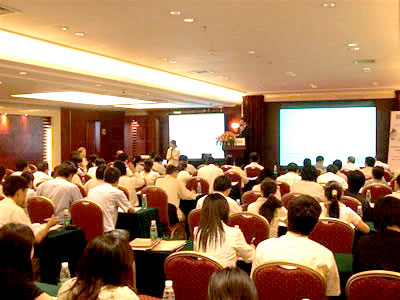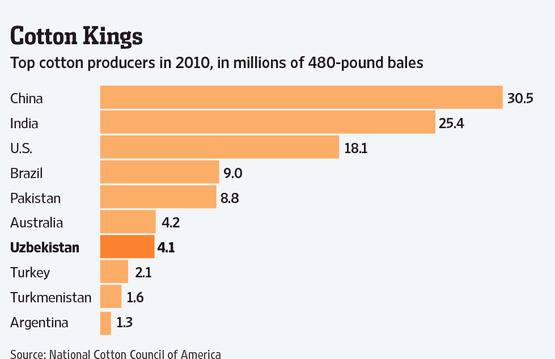|
Paper and packaging group Sappi said it would be looking to explore opportunities to expand its chemical cellulose business and grow its current market share of about 15%, CEO Ralph Boëttger said on Thursday. His comments come as Sappi announced a $170-million investment to convert the kraft pulp mill in Minnesota, in the US, to chemical cellulose, which is used in textile and consumer goods market. The conversion would come on line in 2013, when the Ngodwana mill, in South Africa would also become operational, pushing Sappi¡¯s total chemical cellulose capacity to over 1.3-million tons a year. The expansion at the Ngodwana mill operations in Mpumalanga will produce kraft linerboard, newsprint, as well as 210 000 t of chemical cellulose. Sappi currently produces about 750 000 t/y of chemical cellulose from its sole producing Saiccor plant in KwaZulu-Natal, supplying about 15% of market demand and making it the largest supplier of the product in the world. The planned conversion at the Minnesota-based mill, once complete, will allow the production of 330 000 metric tons of chemical cellulose a year. Approved capital plans also call for a $13-million project to upgrade coated paper manufacturing at the Sappi Somerset mill in Skowhegan, Maine. The $13 million capital project at the Somerset mill includes upgrades to the existing gap former on PM3, improving its cost structure and allowing the production of a broader range of products on the machine. The PM3 rebuild project is expected to be complete in 2012. ¡°These investments reflect Sappi¡¯s confidence that the North American region can play a significant role in the global chemical cellulose market, complementing already strong market positions in release and fine papers,¡± Boëttger said. The globally low-cost position of Sappi¡¯s Cloquet pulp mill will provide an attractive platform for growth with current chemical cellulose customers, as well as open up new markets, he explained. While the company looked to continue to responsibly grow its business in future, Boëttger told Engineering News Online that exploiting opportunities in its chemical cellulose market did not only mean growth through acquisitions. ¡°We will look to opportunities to increase our market share and grow as a low-cost producer. But, this growth will also be determined by markets condition in future. ¡°There are many speciality sides to the chemical cellulose business that would not require large cash injections, and we could explore these avenues and look to opportunities in manufacturing,¡± he explained. As such, the Southern African and North American operations¡¯ cellulose business continued to perform strongly for the fourth quarter ended September. Global demand, the company said, showed some signs of softening, largely as a result of lower growth during the quarter. The company sold a record 190 000 t of chemical cellulose. The group posted an operating loss of $88-million for the quarter, down from the previous quarter¡¯s profit of $54-million, with basic loss a share for the three months at 24c compared with 23c from the June quarter. Boëttger expects a return to profitability in 2012, and said the company remained well positioned for the current economic uncertainties. ¡°We had a strong start to the year, but economic conditions impacted on our operations. Provided there is no further major deterioration in the global market conditions, we expect to continue the past two years' trend in improving operating performance and achieve a net profit for the full year of 2012.¡± Conditions for market remained uncertain throughout the quarter given the current state of the global markets. Although sales volumes were about 6% lower than the corresponding quarter of 2010, sales value increased slightly to $1.8-billion, largely as a result of currency movements. Input costs including wood, pulp, chemicals and energy were high for the quarter but did start declining during the quarter as economic growth slowed. Its fine paper division saw sluggish demand partly as a result of market uncertainty, with sales volumes for the quarter about 5% below last year. Prices in export markets were impacted by the supply/demand imbalance created by major start-ups of coated paper capacity in China in recent months. However, Boëttger said that the China fine-coated paper industry was less of a threat than it was in the past, but still remained a ¡°force to reckoned with¡±. ¡°I think there is a realisation by the industry and government that margins and returns in this business are not as high as might be expected, and hence we do not anticipate any new capacity coming on line soon.¡± Raw material prices, particularly for chemicals, energy and pulp, remained high during the quarter. The performance of the Southern African business was also significantly impacted by the industry-wide wage-related strike of about three weeks in July. Industry demand levels have softened in all major markets, the company said. However, the company is experiencing reasonable demand for graphic paper in North America and somewhat slower demand in Europe. Pulp prices have declined, partly as a result of weaker demand from China, but remain above historical average levels. www.engineeringnews.co.za
|
|
Sappi eyes bigger slice of chemical cellulose market
Updated: 2011-11-11 Source: www.engineeringnews.co.za

Recommended News
Photo Gallery
Most Popular



